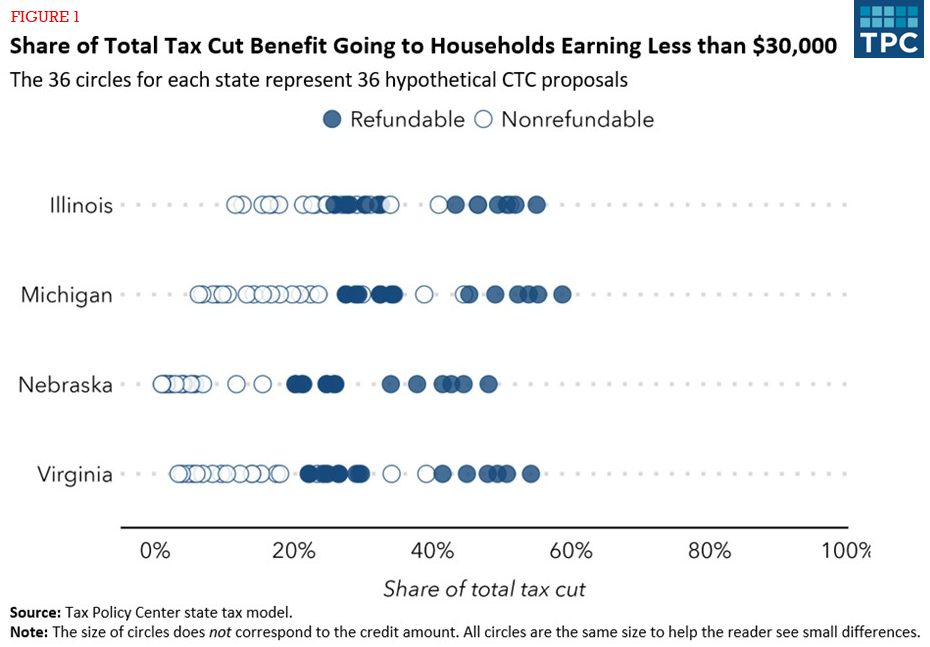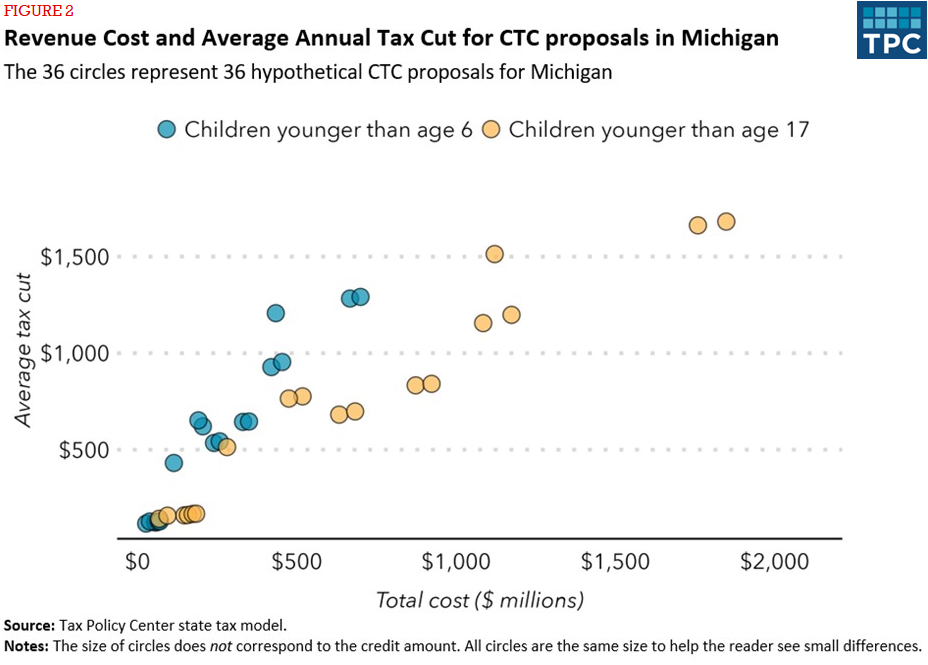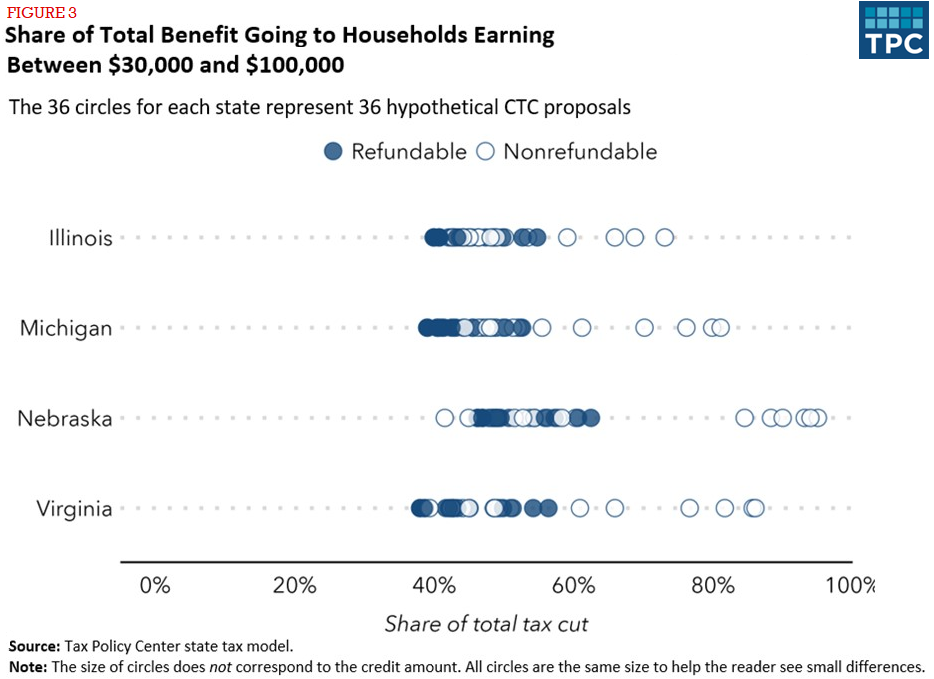In 2021, the American Rescue Plan (ARP) temporarily but significantly expanded the federal child tax credit (CTC), and child poverty fell from 9.7 percent to 5.2 percent. Since then, state policymakers across the country have worked on constructing a CTC for their own states.
In fact, 12 of the 15 current state CTCs were either enacted or expanded after the ARP was passed.
However, the structure and size of these credits varies significantly. State credit amounts range from $100 to $1,750 per eligible child, and some credits are broadly available to most families while others are more narrowly targeted at households with low income or young children.
To help state decisionmakers understand the policy choices involved in designing a new or expanded credit, we used the Tax Policy Center state tax model to analyze 36 versions of a hypothetical child tax credit in four states that currently do not provide one: Illinois, Michigan, Nebraska, and Virginia.
Here are three lessons from our new report on state child tax credits:
1. A state’s existing tax policies can affect who benefits from a CTC
A nonrefundable credit can only benefit households with taxable income, and tax system features that reduce taxable income, such as a standard deduction, vary significantly across states.
For example, Nebraska offers a generous standard deduction, and that means many low-income Nebraska households pay little or no state tax. However, it also means a large share of low-income Nebraska households would not benefit from a nonrefundable CTC.
In contrast, if a refundable credit exceeds a household’s state income tax liability, the household receives the excess amount as a refund payment from the state. Thus, refundable CTC proposals we analyzed tended to deliver a larger share of their total tax benefits to households with less than $30,000 in adjusted gross income (AGI) compared to nonrefundable credit proposals.

2. Age restrictions can help deliver large, broad benefits, but to a smaller share of families
Every method for limiting the revenue cost of a state CTC comes with a tradeoff. Nonrefundable credits generally do not benefit households with the lowest incomes, tight income phase-outs restrict the benefit to only low-income households, and small credit amounts provide relatively small benefits to eligible families.
Restricting the CTC to households with young children reduces the overall share of households benefiting from the credit, but it allows the state to provide a relatively large tax cut to households with a wide range of incomes for a reduced annual revenue cost. Looking at Michigan’s results, age-restricted CTCs often provided a larger average annual tax cut than CTCs available to all children younger than age 17 at similar annual revenue costs.

3. Most child tax credits provide a large share of their total tax benefit to middle-income households
Middle-income households typically see a relatively large share of a CTC’s total tax benefit because the size of the tax cut depends on the number of eligible children in the household and not the household’s income level (as it does with an individual income tax rate cut).
Further, while some policy levers prevent low-income households from benefiting (nonrefundable credits) and some prevent high-income households from benefiting (income phase-outs), a large share of middle-income households typically benefit from a state CTC unless the income phase-out is set at a very low level.

Taken together, Tax Policy Center state tax model estimates for various credits in Illinois, Michigan, Nebraska, and Virginia show how policymakers can pick and choose numerous variations of a state CTC to find the right version of the credit for their state.
Specifically, they can decide the amount of the credit, age eligibility rules for children, income limitations for the filer, and whether or not the credit is refundable. In short, making these policies more generous increases benefits to eligible families or broadens the support across more households, but at a higher annual revenue cost.
Policymakers should be aware of these tradeoffs and choose according to their own specific fiscal circumstances and policy priorities.
